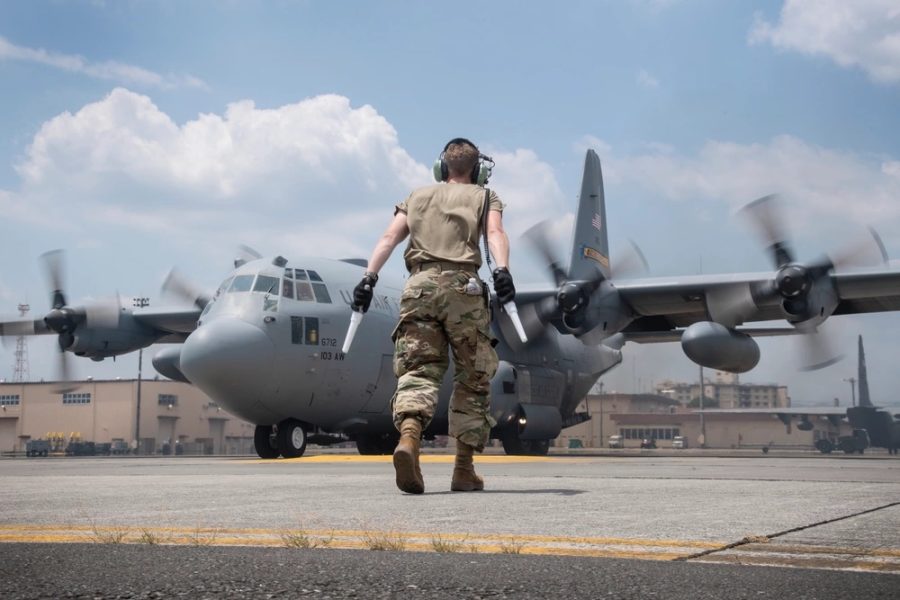The Air Force’s $3.5 billion Unfunded Priorities List for fiscal 2025, forwarded to Congress last week, skips the requests for more aircraft that have highlighted past years. Instead, the annual “wishlist” of things that got cut from the service’s budget request focuses on housekeeping accounts such as spare parts, exercises, military construction, and some money for the new “re-optimization” plan.
In the past, the Air Force has asked for more F-35s, F-15EXs, or KC-46s. But this year, the list emphasizes fight-tonight readiness; following on Air Force Secretary Frank Kendall’s acknowledgement that the actual budget proposal of $188.1 billion “protects modernization.”
The largest single item on the list is $1.5 billion for “single spares restock for aircraft projected to be grounded due to lack of spare parts, impacting aircraft readiness,” the Air Force said in a briefing deck obtained by Air & Space Forces Magazine.
“This option was partially funded during FY25, but the full requirement could not be resourced,” the document said. “The fiscally constrained environment necessitated difficult decisions and it was not possible to fully fund key programs while still meeting other Air Force priorities.”
Referring to the request as a “spare surge,” the Air Force added that “this is intended to be a single year, single spares restock request with no impact to future FYDP [Future Years Defense Plan] funding lines.”
The second-biggest item is $1.16 billion for 26 military construction projects.
“Due to requirements growth and inflation, there [were] not sufficient funds to properly fund all USAF foundational accounts,” the document states. The projects are all either mission-oriented or affect quality of life, it said.
“If funding is provided, it would allow the USAF to reprioritize worldwide projects across the FYDP to buy down the $46.8B backlog on defense infrastructure and facilities preparing for Great Power Competition,” the service document added.
The largest item in the MILCON list, at $215 million, is a classroom and dining facility complex at Joint Base San Antonio-Lackland, Texas. Another $158 million is for a strategic air operations center at an undisclosed location, while $148 million is marked for a “multi-domain operations complex” at Beale Air Force Base, Calif.
At $612 million, the third-largest single item on the unfunded priorities list is money to create nine new “deployable Mission Generation Force Elements (MGFE) with existing personnel and fighter aircraft,” USAF said.
This is characterized as funding needed for the “re-optimization” effort—the service has said it wants to develop “combat wings” that have all the equipment, personnel, and support needed to deploy as a whole unit. MGFEs are the elements that actually conduct the operations and maintenance.
The Air Force said its re-optimization projects were “not developed in time for [the] FY25 Program Objective Memorandum (POM) submission since analysis was on-going alongside the USAF’s effort to Re-Optimize for Great Power Competition (GPC). The additional forces generated by this submission will be additive to current force generation capabilities, bolstering service posture.”
The money would be spent on “readiness spares packages, aviation support equipment, and munitions support equipment necessary to re-organize the fighter force structure to produce nine additional mission generation force elements (MGFE), which would make available up to 208 combat-coded fighter aircraft in the existing USAF inventory. Funds for sustaining equipment and aircraft are already funded throughout the FYDP.”
A fourth item, for $266 million, is seed money for major, every-other-year exercises to practice Agile Combat Employment, in which the Air Force will deploy small units to various extant and austere bases, generate sorties, then pick up and move in a rapid fashion.
Again, the Air Force said this line item wasn’t developed in time to make the fiscal 2025 budget.
“There was no funding for a Theatre-Wide ACE rehearsal provided in FY24 or FY25 budgets. This request will fund the first Theatre-Wide ACE exercise,” USAF said. It “addresses Air Force and Combatant Commander requirements for high level campaigning and integrated training.”
The off-budget request “enables Pacific Air Forces, along with other MAJCOMs [Major Commands], joint, allied and partner forces to execute the first Theatre-Wide ACE Exercise in FY25 and request continued resource support in future program year FYDPs,” the Air Force explained.
Major cross-command exercises in the Pacific were another focus of the re-optimization effort.
“The exercise would execute biennially with the funding required in FY27 to execute the second event and every other year after. $5M is required in preceding FYs to plan and posture to execute the biennial exercise.”
By law, the unfunded priorities list is to be forwarded to the Secretary of Defense, Joint Chiefs of Staff, and four committees that chiefly oversee defense spending—the House and Senate Armed Services and Appropriations Committees—10 days after the annual defense budget request is submitted to Congress. The 2017 law arose from a tradition of Congress asking the services what they would buy if they had additional funds beyond what the administration in office proposed.
Last year, Defense Department leadership came out in favor of repealing the law. Comptroller Michael McCord told Sen. Elizabeth Warren, a critic of the lists, that the wishlists are disruptive to the budgeting process because, after priorities have been set, the services can end-run the process.
“The current statutory practice of having multiple individual senior leaders submit priorities for additional funding absent the benefit of weighing costs and benefits across the department is not an effective way to illuminate our top joint priorities,” McCord wrote in a letter, noting he was speaking for Defense Secretary Lloyd Austin.
